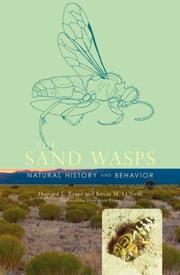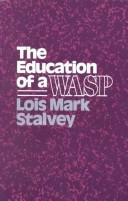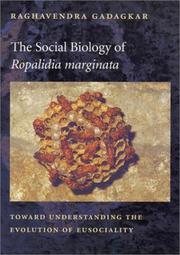| Listing 1 - 10 of 13 | << page >> |
Sort by
|
Book
Year: 2013 Publisher: [Place of publication not identified] : Project Gutenberg,
Abstract | Keywords | Export | Availability | Bookmark
 Loading...
Loading...Choose an application
- Reference Manager
- EndNote
- RefWorks (Direct export to RefWorks)
Unlike some other reproductions of classic texts (1) We have not used OCR(Optical Character Recognition), as this leads to bad quality books with introduced typos. (2) In books where there are images such as portraits, maps, sketches etc We have endeavoured to keep the quality of these images, so they represent accurately the original artefact. Although occasionally there may be certain imperfections with these old texts, we feel they deserve to be made available for future generations to enjoy.
Book
ISBN: 0643102442 1283156547 9786613156549 0643100768 9780643100763 9781283156547 9780643102446 0643067035 9780643067035 Year: 2001 Publisher: Collingwood, Vic. : CSIRO Pub.,
Abstract | Keywords | Export | Availability | Bookmark
 Loading...
Loading...Choose an application
- Reference Manager
- EndNote
- RefWorks (Direct export to RefWorks)
Provides a full taxonomic treatment and review of these wasp parasitoids in a global context.
Book
Abstract | Keywords | Export | Availability | Bookmark
 Loading...
Loading...Choose an application
- Reference Manager
- EndNote
- RefWorks (Direct export to RefWorks)
Insects. Springtails --- Fauna. Zoological determination guides --- Belgium --- Netherlands --- Eastern and Central Europe --- 595.79 --- Bijen --- Mieren --- Wespen --- Ants --- Bees --- Wasps --- Hymenoptera --- Ants. --- Bees. --- Wasps. --- Hymenoptera.

ISBN: 0674036611 9780674036611 9780674024625 0674024621 Year: 2007 Publisher: Cambridge, Mass. : Harvard University Press,
Abstract | Keywords | Export | Availability | Bookmark
 Loading...
Loading...Choose an application
- Reference Manager
- EndNote
- RefWorks (Direct export to RefWorks)
Howard Evans was a brilliant ethologist and systematist, describing over 900 species in over a dozen entomology and natural history books. Upon his death in 2002, he left behind an unfinished manuscript, intended as an update of his classic 1966 work, The Comparative Ethology and Evolution of the Sand Wasps. O'Neill, Evans's former student and coauthor, has completed and enlarged this work into a tribe-by-tribe, species-by-species review of Bembicinae studies from the last four decades.
Sphecidae. --- Sphecidae --- Alysonidae --- Astatidae --- Bembecidae --- Bembicidae --- Cerceridae --- Crabronidae --- Gorytidae --- Larridae --- Mellinidae --- Oxybelidae --- Pemphredonidae --- Psenidae --- Stizidae --- Trypoxylonidae --- Hymenoptera --- Solitary wasps --- Behavior.

ISBN: 1283485923 9786613485922 0299119734 9780299119737 9781283485920 6613485926 029911970X 0299119742 9780299119744 9780299119706 Year: 1989 Publisher: Madison, Wis. : University of Wisconsin Press,
Abstract | Keywords | Export | Availability | Bookmark
 Loading...
Loading...Choose an application
- Reference Manager
- EndNote
- RefWorks (Direct export to RefWorks)
WASPs (Persons) --- Discrimination --- White Anglo-Saxon Protestants --- British Americans --- Ethnology --- European Americans --- Protestants --- Whites --- Stalvey, Lois Mark. --- United States --- Race relations. --- Race question --- White people
Book
ISBN: 1400853834 0691612269 9781400853830 0691047162 1322009910 Year: 1984 Publisher: Princeton, New Jersey : Princeton University Press,
Abstract | Keywords | Export | Availability | Bookmark
 Loading...
Loading...Choose an application
- Reference Manager
- EndNote
- RefWorks (Direct export to RefWorks)
As the United States moved from Victorian values to those of modern consumerism, the religious component of Freemasonry was increasingly displaced by a secular ideology of service (like that of business and professional clubs), and the Freemasons' psychology of asylum from the competitive world gave way to the aim of good fellowship" within it. This study not only illuminates this process but clarifies the neglected topic of fraternal orders and enriches our understanding of key facets of American cultural change.Originally published in 1984.The Princeton Legacy Library uses the latest print-on-demand technology to again make available previously out-of-print books from the distinguished backlist of Princeton University Press. These editions preserve the original texts of these important books while presenting them in durable paperback and hardcover editions. The goal of the Princeton Legacy Library is to vastly increase access to the rich scholarly heritage found in the thousands of books published by Princeton University Press since its founding in 1905.
WASPs (Persons) --- Freemasonry --- White Anglo-Saxon Protestants --- British Americans --- Ethnology --- European Americans --- Protestants --- Whites --- Masonic orders --- Masonry (Secret order) --- History --- United States --- Social conditions --- White people
Book
ISBN: 1402098065 9786612036293 1282036297 1402098073 Year: 2009 Publisher: [Dordrecht] : Springer,
Abstract | Keywords | Export | Availability | Bookmark
 Loading...
Loading...Choose an application
- Reference Manager
- EndNote
- RefWorks (Direct export to RefWorks)
This summary of the results of chromosomal analysis of various groups of parasitic wasps will be essential reading for those working in the field. It is the second edition of a monograph that was first published in Russian, and has been substantially updated with new data, conclusions and references. The goal of this ground-breaking work is to document the author’s study of the karyotype structure and chromosomal evolution of parasitic Hymenoptera. It also interprets the results obtained, from both routine and differential chromosome staining, for systematic and phylogenetic purposes. Despite the huge importance of parasitic wasps, many problems of their taxonomy remain insufficiently studied. This is a situation that needs rectifying, as Hymenoptera are one of the largest and most taxonomically complicated groups of insects and they play a very important role in food chains as parasitoids of the overwhelming majority of insects and other arthropods. Parasitic wasps attack many pests of agriculture and forestry as well as certain beneficial insects. In addition, some secondarily phytophagous Hymenoptera damage certain cultivated plants. The renowned entomologist and author of this volume, Vladimir Gokhman, has himself developed a particular technique for obtaining chromosomal preparations from adult parasitic wasps. This allowed the inclusion of a wide range of those insects into the study. The karyotypic features of the majority of superfamilies and families as well as many lower taxa of parasitic Hymenoptera are listed, while the plesiomorphic and apomorphic character states of chromosome sets of parasitic wasps are revealed. The structural features of karyotypes used for identifying and discriminating sibling species and similar forms are shown, as are the data on chromosome sets of about 400 species of parasitic Hymenoptera (including more than 200 micrographs). Also included is a comprehensive phylogenetic and taxonomic analysis of karyotypic information. This book is unique because it demonstrates a range of karyotypic data for an insect group that seemed unattainable in this respect not so long ago. Rich in new facts, techniques and ideas, it will be of use to all those interested in karyology and Hymenoptera.
Hymenoptera --Genetics. --- Karyotypes. --- Parasitic wasps --Genetics. --- Parasitic wasps --- Karyotypes --- Hymenoptera --- Invertebrates & Protozoa --- Zoology --- Health & Biological Sciences --- Genetics --- Hymenoptera. --- Symphyta --- Life sciences. --- Animal genetics. --- Entomology. --- Life Sciences. --- Animal Genetics and Genomics. --- Animal Systematics/Taxonomy/Biogeography. --- Insects --- Chromosome abnormalities --- Chromosomes --- Cytotaxonomy --- Animal systematics. --- Animal taxonomy. --- Animal classification --- Animal systematics --- Animal taxonomy --- Classification --- Systematic zoology --- Systematics (Zoology) --- Taxonomy, Animal --- Zoological classification --- Zoological systematics --- Zoological taxonomy --- Animals

ISBN: 0674037456 9780674037458 0674006119 9780674006119 Year: 2001 Publisher: Cambridge, Massachusetts : Harvard University Press,
Abstract | Keywords | Export | Availability | Bookmark
 Loading...
Loading...Choose an application
- Reference Manager
- EndNote
- RefWorks (Direct export to RefWorks)
In this book, the biologist Raghavendra Gadagkar focuses on the single species he has worked on throughout his career. His years of study have led him to believe that ecological, physiological, and demographic factors can be more important than genetic relatedness in the selection for or against social traits.
Ropalidia marginata --- Insect societies. --- Insects, Social --- Social insects --- Animal societies --- Insects --- Behavior. --- Behavior --- Insect societies --- 575.87 --- 591.55 --- 595.798 --- 595.798 Vespidae. Social wasps. Wasp (common wasp). Hornet --- Vespidae. Social wasps. Wasp (common wasp). Hornet --- 591.55 Communal life. Animal societies --- Communal life. Animal societies --- 575.87 Origin of organs and functions --- Origin of organs and functions
Book
ISBN: 0323960995 0323961126 9780323961127 9780323960991 Year: 2022 Publisher: London ; San Diego : Elsevier,
Abstract | Keywords | Export | Availability | Bookmark
 Loading...
Loading...Choose an application
- Reference Manager
- EndNote
- RefWorks (Direct export to RefWorks)
Braconidae of the Middle East (Hymenoptera): Taxonomy, Distribution, Biology, and Biocontrol Benefits of Parasitoid Wasps provides the latest and most comprehensive knowledge of parasitoid wasp species. The highest concentration of these species is native to, or found in, the Middle East. This book covers the distribution of these species across the Palearctic region and their widespread global benefits as natural biocontrol agents. Each chapter covers a braconid subfamily, providing introductory information on its biology and phylogeny, total number of species, global distribution, and how they can be used to control pests and invasive insect species. In addition, this book discusses the importance of integrated pest management, specifically how Braconidae can be used for one-time or repeated introduction to natural enemies in suppressing pest populations. Finally, each chapter offers an illustrative key for readers to visualize and identify each species.
Braconidae. --- Middle East. --- Alysiidae --- Braconid wasps --- Braconids --- Hymenoptera --- Parasitic wasps --- Asia, South West --- Asia, Southwest --- Asia, West --- Asia, Western --- East (Middle East) --- Eastern Mediterranean --- Fertile Crescent --- Levant --- Mediterranean Region, Eastern --- Mideast --- Near East --- Northern Tier (Middle East) --- South West Asia --- Southwest Asia --- West Asia --- Western Asia --- Orient --- Braconidae
Book
ISBN: 364244654X 364232679X 3642326803 129933783X Year: 2012 Publisher: Berlin ; Heidelberg : Springer,
Abstract | Keywords | Export | Availability | Bookmark
 Loading...
Loading...Choose an application
- Reference Manager
- EndNote
- RefWorks (Direct export to RefWorks)
This book represents the culmination of the author’s lifetime work on a single fascinating group of insects, the hover wasps, Stenogastrinae. The author explores the biology of these little-known wasps at the threshold of sociality, presenting an ambitious survey of ideas about their evolution and an assessment of the current standing of controversial concepts. Following taxonomic and morphological descriptions, the behaviour, colonial dynamics, social communication and especially the remarkably diverse nests of wasps are discussed. Compared to the better-known species of paper wasps, hornets and yellowjackets, the hover wasps show various peculiarities, such as characteristics of immature brood rearing, nest defence and mating systems. The nest architecture probably presents the most variable solutions in social wasps and is characterized by an astonishing level of camouflage, making these insects an interesting example of special adaptation to forest environments.
Aphytis -- Congresses. --- Bees. --- Stenogastrinae --- Vespidae --- Wasps --- Zoology --- Health & Biological Sciences --- Invertebrates & Protozoa --- Vespidae. --- Wasps. --- Aculeata --- Diploptera --- Life sciences. --- Behavioral sciences. --- Evolutionary biology. --- Zoology. --- Entomology. --- Life Sciences. --- Behavioral Sciences. --- Evolutionary Biology. --- Hymenoptera --- Animal behavior. --- Evolution (Biology). --- Biology --- Natural history --- Animals --- Animal evolution --- Biological evolution --- Darwinism --- Evolutionary biology --- Evolutionary science --- Origin of species --- Evolution --- Biological fitness --- Homoplasy --- Natural selection --- Phylogeny --- Animals, Habits and behavior of --- Behavior, Animal --- Ethology --- Animal psychology --- Ethologists --- Psychology, Comparative --- Insects --- Behavior
| Listing 1 - 10 of 13 | << page >> |
Sort by
|

 Search
Search Feedback
Feedback About UniCat
About UniCat  Help
Help News
News